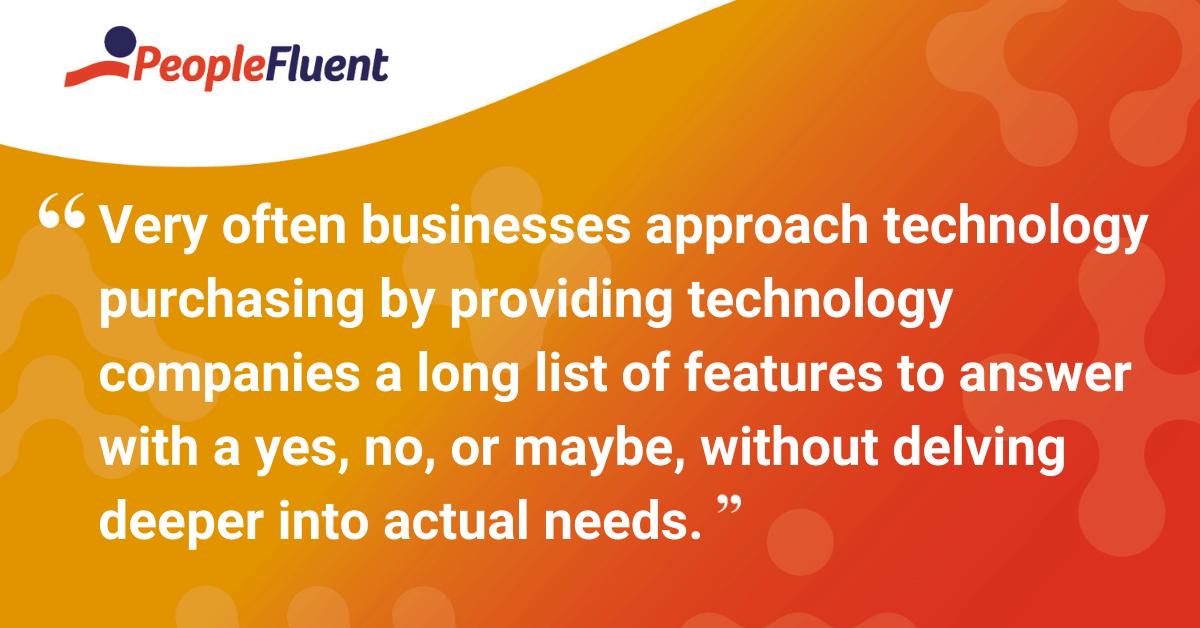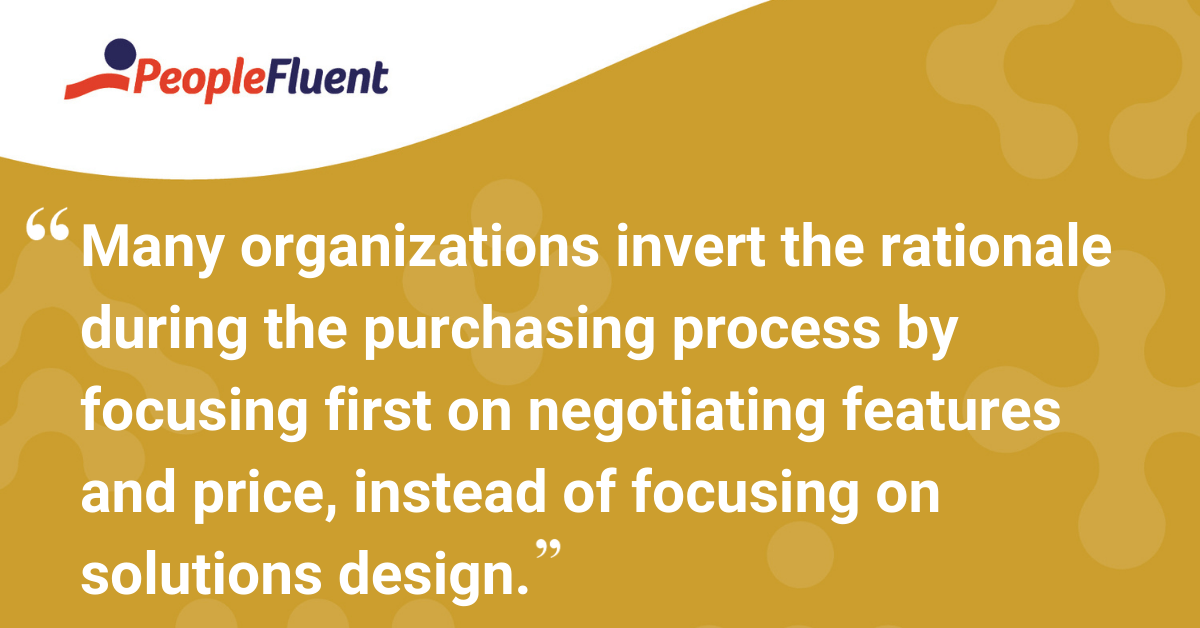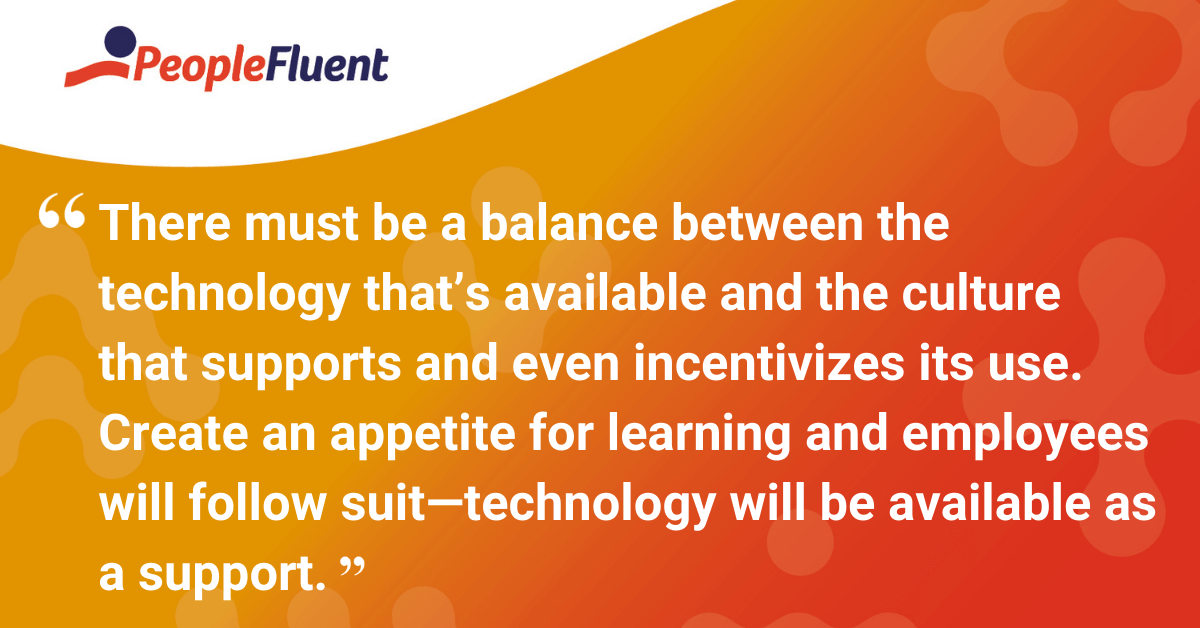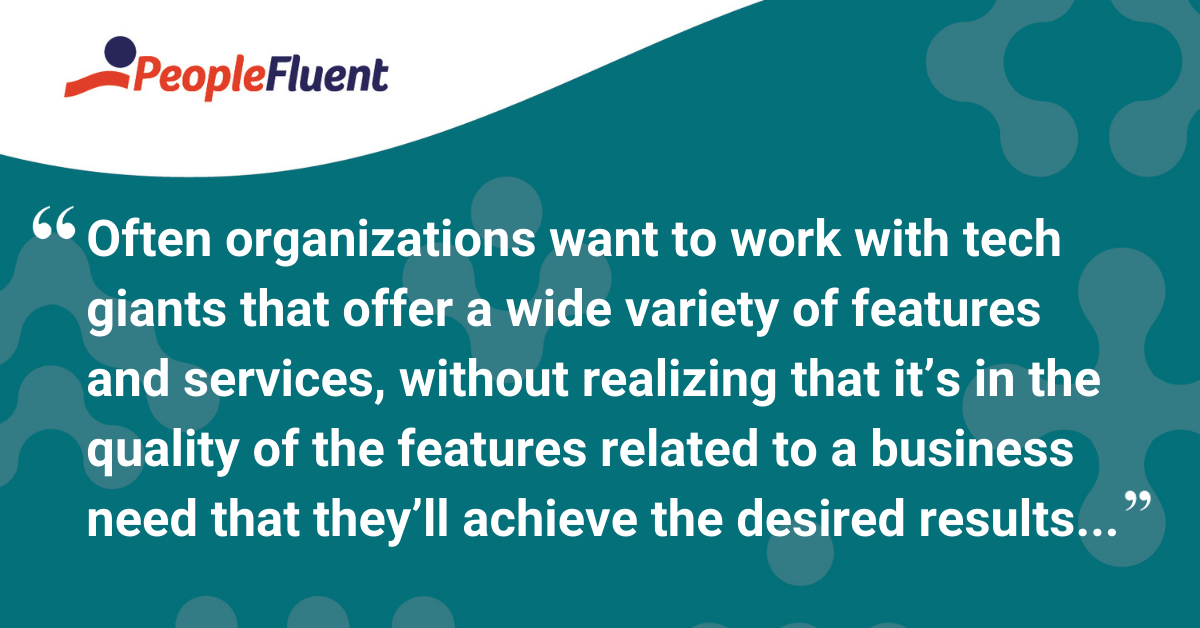Published: Nov 4, 2020Time to read: 7mins Category: Learning
When Features Aren't What Matters: Choosing the Right Technology for Your Organization
Choosing the right technology for your organizational needs is not so much about all the features a certain technology provider delivers, but rather about how the technology will in fact make a positive impact on your corporate objectives. Too often, companies become mesmerized by the possibilities facilitated by technology features, without actually knowing whether the technology will be useful to support business goals. Or even be adopted by staff. Here, we’ll explore how companies could better approach choosing the right learning technology for their business endeavors and the fact that sometimes, less is definitely more.
When Features Aren't What Matters
Today’s technology offering can be exciting and daunting at the same time. There’s a myriad of possibilities within reach today, but how should companies actually choose the technology that’s right for them?
Organizational leaders become enticed by the list of features a certain technology offers, but choosing technology based on capabilities without a true sense of how these will advance learning and development programs is a mistake.
One that can be costly in every business sense.
Rather, choose a technology that helps build and nurture your organization’s learning and business objectives and culture without focusing solely on checking off a list of features for features’ sake.

You might also like: ‘5 Reasons Why the ‘Netflix of Learning’ May Be a Bad Idea’
3 Mistakes to Avoid When Choosing Technology
Here are some common mistakes companies make when choosing a technology provider and platform that should be avoided.
1) Handing a Technology Provider a Long Features Matrix Without Clear Goals in Mind
Very often businesses approach technology purchasing by providing technology companies a long list of features to answer with a yes, no, or maybe, without delving deeper into actual needs.
But here’s the problem with that:
More often than not, many features aren’t actually used or needed in the end, but somehow are part of a compulsory features list without serving a clear purpose.
The result?
Companies buy expensive technology with only a small percentage of its features used. This can be costly and can make your ecosystem feel bulky because of the amount of technology taking up space.

Related reading: ‘Hollywood Hacks: 4 Ideas for Affordable, Professional-Quality Video Learning Content’
2) Using the Kitchen-Sink Approach to Come up With Technology Requirements
Does one size fit all?
Definitely not!
This approach is where businesses go around asking various team members and company stakeholders for their wants from a technology perspective. The problem is this happens without someone vetting the information to understand why a specific technology feature is being demanded. Or the specific outcome it’s meant to fulfill. Asking the right questions around a feature request will ensure the correct technology is acquired based on real needs.
These are some of the questions you should ask your internal teams:
- Who is going to use the technology?
- Why do they say they want to use it?
- What are they going to use it for?
- How are they going to use it?
More from the blog: ‘7 eLearning Tools Every L&D Pro Needs’
3) Focusing on Features and Price Versus Solutions Design
This is perhaps the most important pitfall to avoid when looking to buy new technology.
Many organizations invert the rationale during the purchasing process by focusing first on negotiating features and price, instead of focusing on solutions design.
Generally speaking, technology companies can be more helpful to customers when there’s a clear discussion around solutions design. This means bringing your needs to the table to potential tech providers earlier and having them come up with the right features that will help you achieve your end-goal. Avoid feature and price comparison at all costs and instead, focus on getting the right technology to drive results.

You may be interested in reading: ‘What's the Difference Between an LMS and an LXP? [Buyer's Guide]’
Technology Supports Business Cultures, Not the Other Way Around
Technology is there to support initiatives and processes, but ultimately, business culture precedes it and actually drives its adoption.
It’s worth remembering this when looking to add new technology into your organization and determining the success of your purchasing decision against business objectives.
Here’s a good example:
Let’s consider learning and development within the current global context. The pandemic has changed the way we live and work. Digital transformation means businesses and their employees need to upskill on their digital competencies. While Human Resources departments might have the right technology to enable employee learning, organizations must push for a culture of learning and provide employees with the space, time, and meaningful motivation to drive learning behavior.
There must be a balance between the technology that’s available and the culture that supports and even incentivizes its use. Create an appetite for learning and employees will follow suit—technology will be available as a support.

You might also like: '5 Ways a Creator-Centric Approach Prepares L&D for a Changing Role'
The Right Way to Partner With Technology Providers
Choosing the right technology for your business hinges on choosing the right tech partner. During early conversations, ensure that you’re aligned on business objectives and that you receive a consultative approach to the purchase of new technology.
Ask yourself:
Is your potential technology partner asking the right questions to provide the best solution? Are they focused on building a relationship based on your actual needs?
Don’t be discouraged to work with a technology partner that’s focused on delivering quality versus quantity. Frequently organizations want to work with tech giants that offer a wide variety of features and services, without realizing that it’s in the quality of the features related to a business need that they’ll achieve the desired results, as well as potentially developing a long-term relationship that will evolve along with your corporate needs over time.
If your potential technology partner is willing to forgo a business relationship and transaction based on alignment, this is a very positive sign.
And there’s more...
See if you can test-drive technology prior to committing. Piloting programs is perhaps the most effective way to define whether you’re on the right track before committing not only to a purchase but putting your teams through a massive implementation.

Also on the blog: ‘Everything You Wanted to Know About LXPs (But Were Too Afraid to Ask)’
Acquire Technology With the End in Mind
Finally, a great way to think about your next technology addition is to have an end-result in mind and work your way back. Be honest as a company about what it is that you want and need from a technology perspective.
Ask yourself:
- Do you want to improve employee retention?
- Do you want to help people move around?
- Do you care about revenue and profit?
Define the end-goal of what you wish to achieve and think about the business impact learning can drive. If, for example, your Sales team isn’t as knowledgeable about your product offering, perhaps developing and deploying content and getting it to the right teams through technology will bring the desired results.
If you know the types of results you want to see as a company and in your workforce, then you can shape training outcomes around that, which often leads to simpler technologies and content solutions than what you think you need or have today.
Handpicked for you: ‘6 Reasons Why You Need to Start Using eLearning Video—Today!’
Discover the power of learning experience platforms
Instilled by PeopleFluent is a video-based learning platform designed for the next generation of learners and learning. Want to see what Instilled can offer your team?